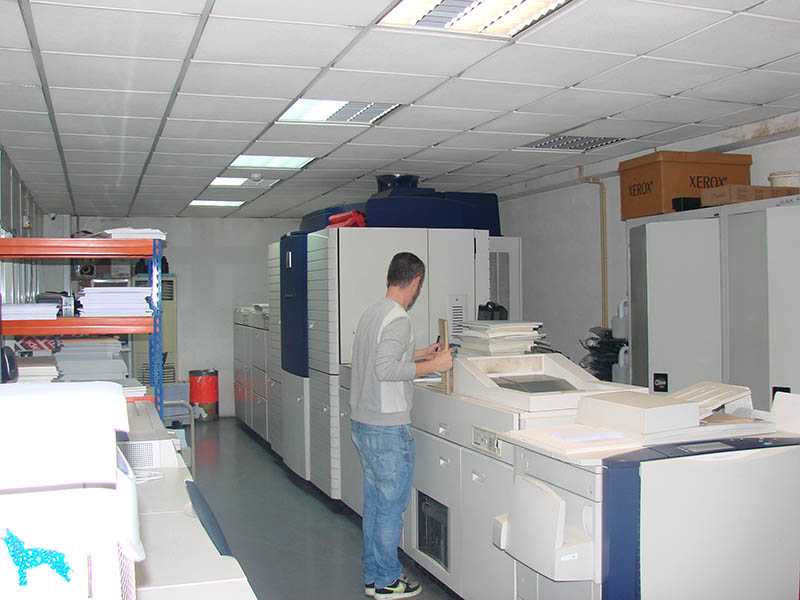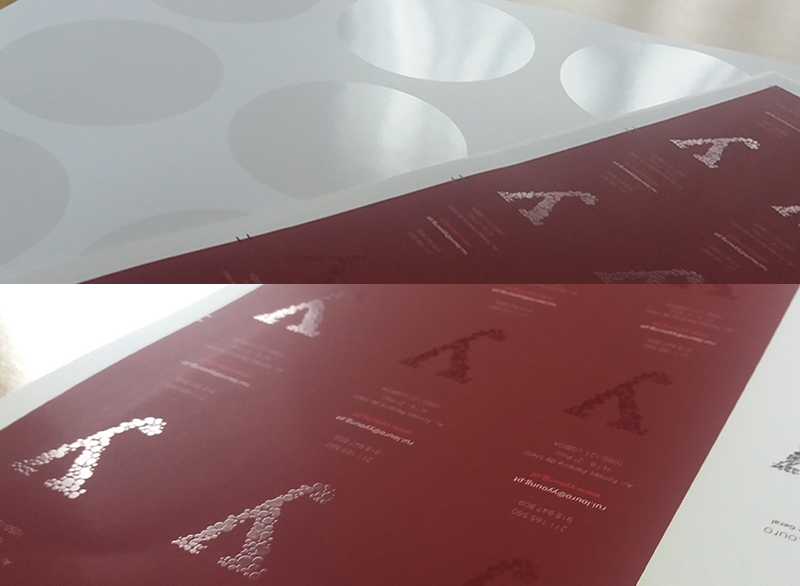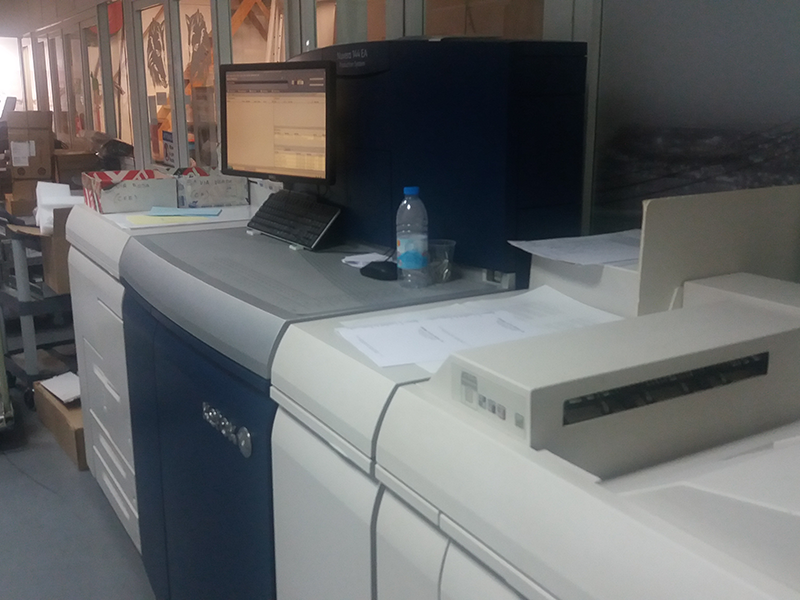
The new Xerox iGen5
Tipografia Lobão, at the vanguard of digital printing
We are pleased to announce we acquired and have already working our new Xerox iGen5, a laser printer with outstanding possibilities. The unprecedented printing area in a color laser printer – 65×35 cm – makes possible bigger formats in small runs and in variable data. Works like the A4 landscape folder, requiring a print of 59.4 cm by 21 cm, or the A4 portrait triptych (three A4 side by side) with 63×29.7 cm, while open, could not be made in digital printing.
It should be noted that the iGen5 prints front and back with quite thick papers and, like any other digital printer, can use variable data. It is not a four-color printer, but a five-color one! Beyond quadricolor printing, a direct color can be used, or even a semi transparent varnish like ink.
That fifth color brings another surprise: an alternative to localized printed varnish.

Test prints with digital varnish
That's what is called printing with a transparent but glossy ink that enhances certain zones by its bright, when light reflects on them. Until now, only offset printing could use the printed UV varnish. From now on, digital printing can do it too, at lower prices.
iGen5's partner is Xerox Versant 80, taking care of shorter runs and smaller printing areas. Together, they make a winning team.
Meanwhile, with the machines we already had, we go on doing large monochrome runs and mailings with our Xerox Nuvera 144, form and envelope work in the Xerox ColorQube.

Xerox Nuvera 144.
The capacities of the laser printers evolved, a few years ago, to models with outstanding performances, as in speed, as in print quality, the dimensions or the range of weights of the printable papers, stickers and cardboards we can use.
That's how they became interesting to the printing industry, because they could achieve economically short runs with good quality. Offset printing's big handicap is that it is able to produce with remarkable quality and economy, that economy only is realized in big runs. An offset print has considerable initial costs, in preprinting, plate producing, printer preparation, tuning and so on.
Each new copy adds not much to those costs. So, as the run goes up, each copy's cost goes down. Short runs, while they tend to cost too much per copy when using offset printing, have a flat cost progression. The initial cost is not great but there is no gain in large runs.
In today's market our clients increasingly demand more short run works to respond tho their micromarketing demands. The customization of copies and mailings using databases, a kind of work we call variable data, can only be met by digital printing.
Xerox Versant 80.
Along the years we acquired experience in this sector and we got used to solve the typical technical problems of this kind of work. There are even cases in which the database variable data include pictures, barcodes or QR Codes.
Laser printers take care also of most of personal cards and carbonless forms like invoices and waybills. They are able of numbering the copies (as most forms must be numbered) without the need of a separate mechanical numerator as it happens with offset printing. Even the matrices to hot stamp hats, t-shirts and overalls are made by the digital printers.
The quality shown by the digital laser printed work is such that, for most of the works, the public ignores what process was used to print.